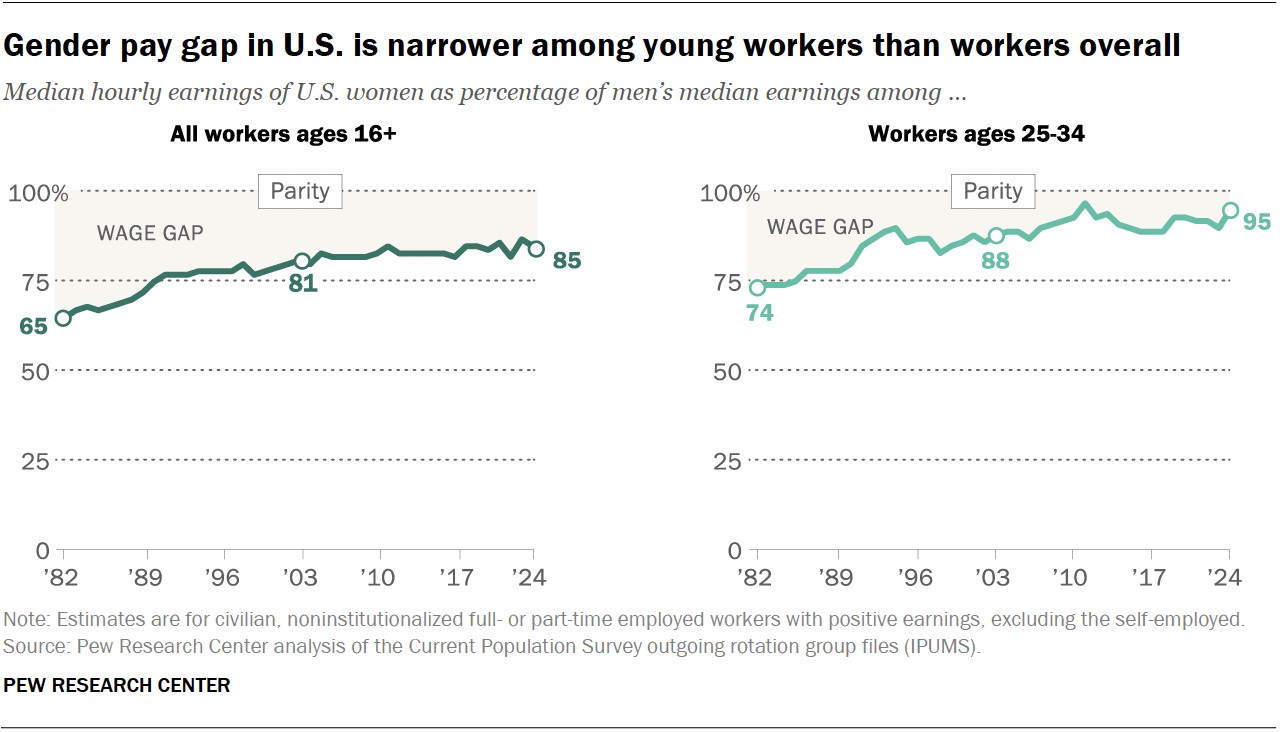The persistent gender pay gap remains a significant issue in the United States. In 2024, women earned 85% of what men earned, reflecting a slight narrowing of the gap from 81% in 2003, according to a Pew Research Center analysis. This analysis examines median hourly earnings for both full- and part-time workers.
The Gender Pay Gap: A Closer Look
The gap is less pronounced for younger workers. Women aged 25 to 34 earned 95 cents for every dollar earned by men in the same age group in 2024—a 5-cent difference compared to the 15-cent gap across all age groups.
This disparity, calculated using median hourly earnings of full- and part-time workers from the Current Population Survey, highlights the ongoing economic inequality between genders. While progress has been made, the gap persists, raising questions about fairness and equal opportunity.
Long-Term Trends and Contributing Factors
While the change since 2003 appears minimal, the long-term trend reveals a more significant narrowing of the gap. The 15-cent gap in 2024 is down from 35 cents in 1982 for all workers, and the gap for workers aged 25 to 34 shrunk from 26 cents to 5 cents.
Factors contributing to the gender pay gap include educational attainment, occupational segregation, and work experience. Women have made significant strides in each of these areas, contributing to the long-term narrowing of the gap.
Even with increased female representation in higher-paying jobs traditionally held by men, women remain overrepresented in lower-paying occupations, potentially contributing to pay discrepancies. Additionally, difficult-to-measure factors like gender discrimination may play a role. The U.S. Census Bureau’s analysis of full-time, year-round workers in 2023 showed women earning 83% of their male counterparts’ earnings, further emphasizing the issue.
Perceptions and Pressures Surrounding the Gap
A Pew Research Center survey revealed that half of U.S. adults believe employers treating women differently is a major reason for the pay gap. Other cited reasons include women making different work-life balance choices (42%) and working in lower-paying jobs (34%).
Women are more likely than men (61% vs. 37%) to attribute the gap to differential treatment by employers. Furthermore, working mothers experience significant pressure to balance work and family responsibilities.
Two-thirds of working mothers report feeling significant pressure to focus on home responsibilities, compared to 45% of working fathers. This disparity in perceived pressure highlights the challenges women face in balancing career and family.
Aspirations and Leadership Roles
Fewer women hold leadership positions compared to men. Only 21% of employed women are bosses or top managers, versus 28% of men. This difference extends to aspirations, with 46% of women stating they do not aspire to leadership roles, compared to 37% of men.
This disparity in leadership roles and aspirations underscores the complex interplay of factors contributing to the persistent gender pay gap in the United States. While progress has been made, addressing these systemic issues remains crucial for achieving true economic equality.
